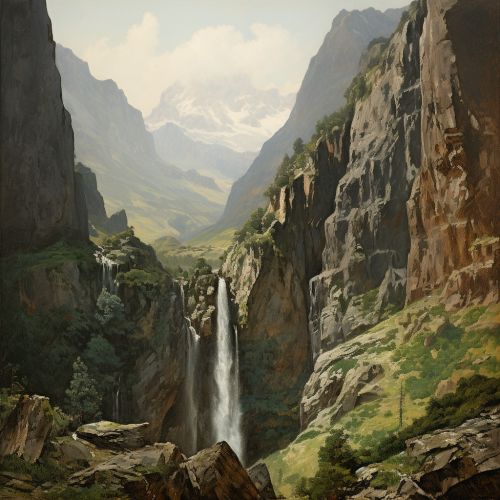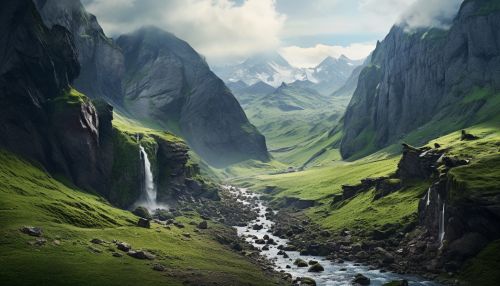Hanging valley
Introduction
A hanging valley is a geographical feature, a tributary valley that is higher than the main valley. They are usually found in areas where glaciers have eroded the landscape. The formation of a hanging valley is typically the result of glacial activity, where the smaller tributary glacier is halted by the more massive and powerful main glacier. This article will delve into the formation, characteristics, and examples of hanging valleys.
Formation
The formation of hanging valleys is primarily associated with the action of glaciers. During the last Ice Age, glaciers carved out deep valleys, leaving behind smaller, shallower valleys that were previously occupied by tributary glaciers. These smaller valleys are known as hanging valleys. The process begins when a glacier carves a U-shaped valley through the landscape. As the glacier recedes, it leaves behind a steep-sided valley. Smaller glaciers, which were tributaries to the main glacier, also carve out valleys. However, these are not as deep as the main valley, and when the glaciers recede, these smaller valleys are left 'hanging' above the main valley.
Characteristics
Hanging valleys are characterized by their location above the main valley, often resulting in dramatic waterfalls. The floor of a hanging valley is significantly higher than the floor of the main valley, due to the more substantial erosion caused by the larger glacier in the main valley. The junction between the hanging valley and the main valley often results in a waterfall, as the river from the hanging valley must descend steeply to meet the main valley floor. These waterfalls are often a significant feature of areas with hanging valleys, adding to their scenic beauty.
Examples
There are numerous examples of hanging valleys around the world, many of which are popular tourist destinations due to their scenic beauty.
Yosemite Valley
Yosemite National Park in California, USA, is home to several hanging valleys. The most famous of these is probably Yosemite Valley itself, which is a hanging valley. The tributary valleys, such as those containing Bridalveil and Yosemite Falls, are also hanging valleys. These waterfalls are the result of the hanging valleys' steep descent to the main valley floor.
Fiordland National Park
In New Zealand, Fiordland National Park is known for its dramatic landscape, which includes many hanging valleys. These valleys were formed by glaciers during the last Ice Age and are now home to stunning waterfalls, such as the Bowen and Stirling Falls in Milford Sound.
The Scottish Highlands
The Scottish Highlands are another area where hanging valleys are common. The valleys were formed by glacial activity during the last Ice Age, and many now contain lochs (lakes). The area's rugged beauty, including its hanging valleys, makes it a popular destination for hikers and nature lovers.
See Also


